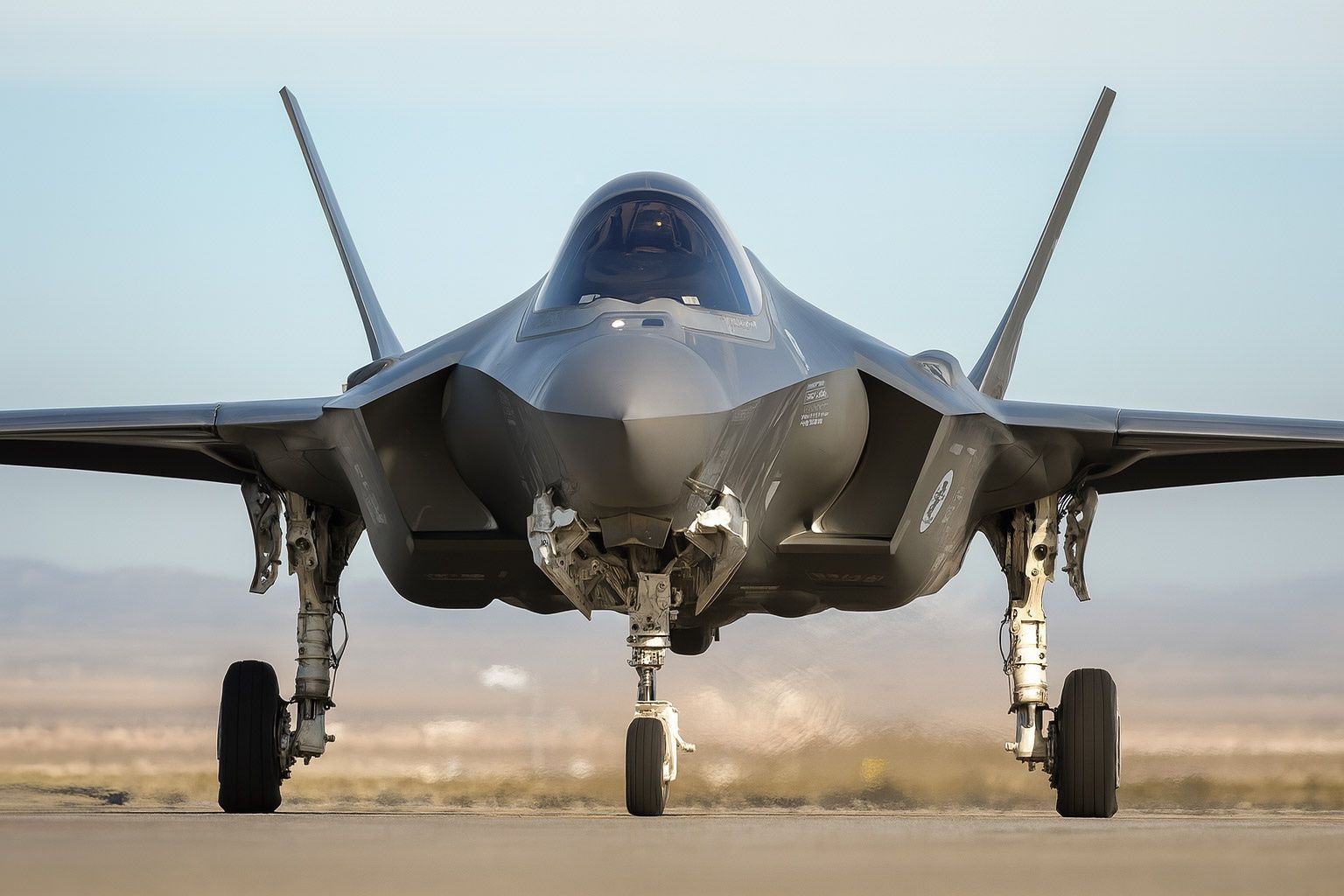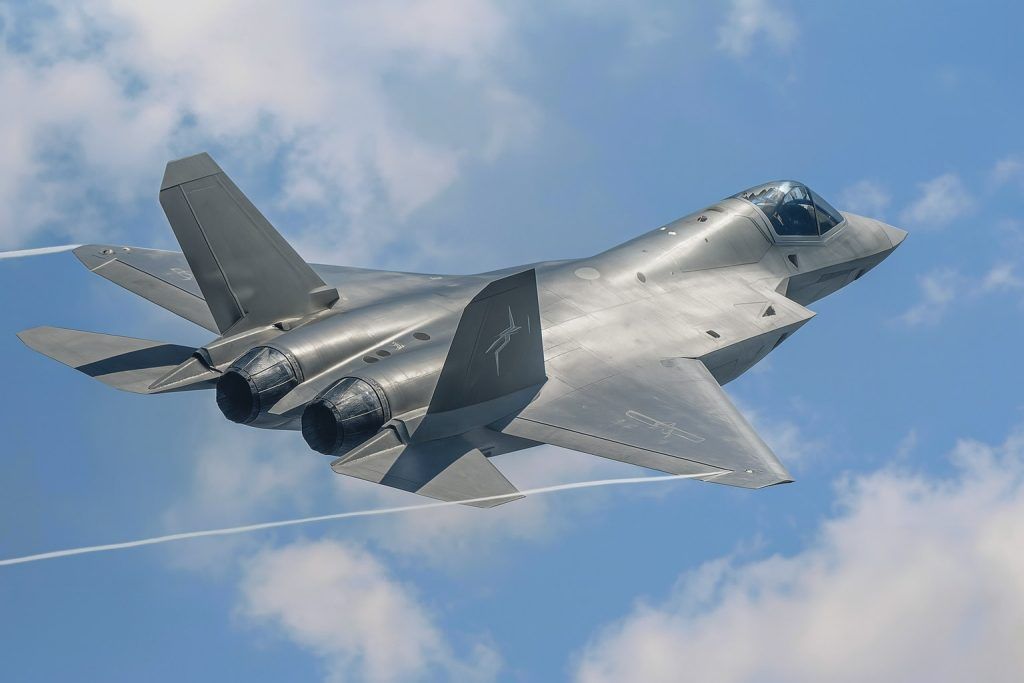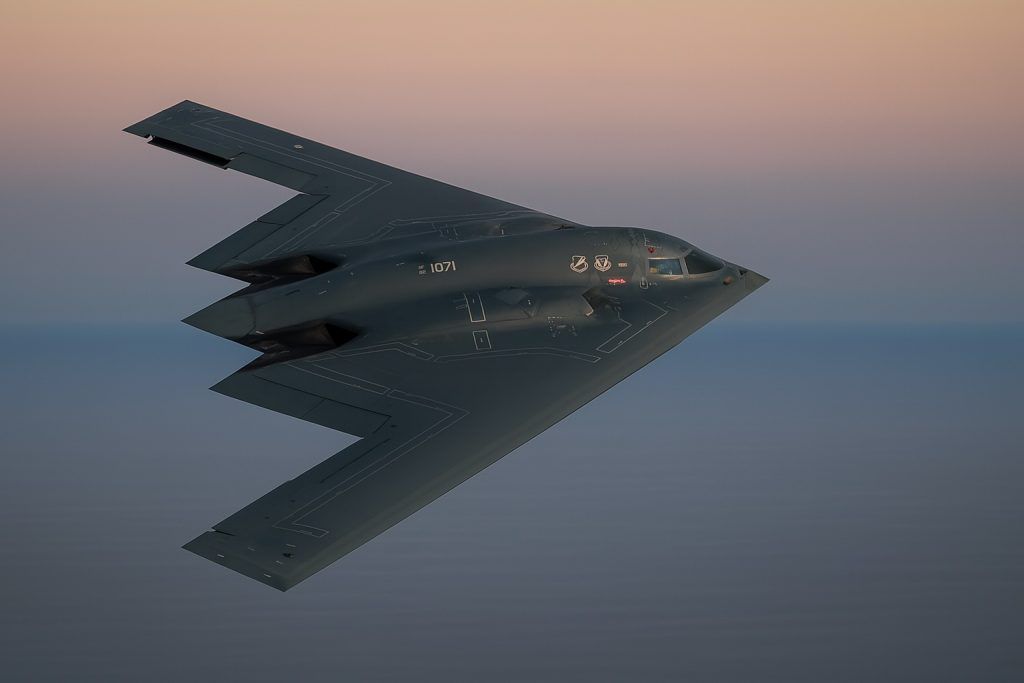- In 2025 the F-35 program began full Block 4 modernization, adding more than 75 enhancements, including the APG-85 AESA radar replacing the APG-81 and the TR-3 hardware/software upgrade that enables sensor fusion and open-system architecture.
- By May 1, 2025 Lockheed Martin had cleared the TR-3 backlog and delivered the last of 72 TR-3-era airframes, reaching roughly 200 F-35s delivered with TR-3 hardware by mid-2025 while full Block 4 software awaited U.S. certification.
- 2025 was targeted as a record production year with 170–190 total F-35 deliveries planned.
- Israel’s F-35I Adir jets flew notional Iran strikes in June 2025 with one-way ranges of 1,000–1,400 miles, aided by 425-gallon drop tanks and 800-gallon conformal fuel tanks.
- The United Kingdom announced an purchase of at least 12 F-35A jets capable of carrying U.S. B61 nuclear bombs, marking the first air-launched UK nuclear capability since 1998.
- Belgium approved 11 additional F-35A Lightning IIs to expand to 45 jets and secured Kongsberg Joint Strike Missiles, with first Belgian F-35s due on home soil by late 2025.
- Greece signed a deal in 2024 for 20 F-35A jets, and in May 2025 the United States awarded a $17.2 million contract to help Greece stand up its F-35 infrastructure.
- The Czech Republic officially signed for 24 F-35s, becoming the program’s 18th nation, while planning to bridge the gap by extending its Gripen lease until delivery.
- January 2025 saw a U.S. Air Force F-35A crash on a base in Alaska during a training flight; the pilot ejected and survived, and an investigation was initiated.
- ODIN, the replacement for the ALIS maintenance system, began fielding efforts in 2025, with initial rollout slower than hoped and new contracts awarded to improve the digital infrastructure.
Introduction: A Pivotal Year for the Stealth Fighter
The year 2025 has been action-packed for the Lockheed Martin F-35 Lightning II. The world’s premier stealth fighter jet found itself at the center of high-stakes military operations, blockbuster procurement deals, and heated political debates. From record production runs and next-gen technical upgrades, to strategic deployments in conflict zones and new nations joining the F-35 club, 2025 showcased the fighter’s growing influence – and its lingering challenges. In this comprehensive roundup, we break down all the major F-35 news of 2025, including global military developments, defense contracts, technological milestones, expert analyses, and quotes from key officials.
Frontline Deployments and International Operations
Combat and Patrols: The F-35 saw intense operational use across multiple theaters in 2025. In the Middle East, Israeli Air Force F-35I “Adir” jets were reportedly involved in high-risk strikes against Iranian nuclear and military targets, flying the most challenging missions the stealth jet has ever faced [1]. These operations – described by one airpower expert as “the most challenging kinetic campaign that F-35s have flown in” – demonstrated the F-35’s ability to penetrate advanced air defenses and achieve air superiority [2] [3]. U.S. forces responded to the regional tensions by deploying additional F-35s (alongside F-16s and F-22s) to the Middle East as a defensive measure, aiming to deter Iranian retaliation and protect American troops [4]. NATO allies also kept F-35s on alert in Europe, patrolling the skies of Eastern Europe as part of the alliance’s bolstered deterrence posture after Russia’s war in Ukraine.
Allied Exercises and Indo-Pacific Moves: The F-35 deepened its role in international exercises, enhancing interoperability with U.S. allies. Notably, U.S. Air Force F-35As operated from the Philippines for the first time ever during the Cope Thunder drills, underscoring America’s commitment to forward-deploy advanced jets in the Indo-Pacific [5]. In Australia, the massive Talisman Sabre 25 exercise saw American pilots flying Royal Australian Air Force F-35s – a landmark exchange that provided U.S. airmen a unique chance to train in ally-owned fifth-generation fighters [6]. The United Kingdom’s Carrier Strike Group 25, led by HMS Prince of Wales, embarked 24 British F-35B jets (a mix of Royal Air Force and Royal Navy aircraft) for operations in the Pacific, demonstrating the jet’s carrier prowess. This deployment was not without incident: in June, one RAF F-35B had to make an emergency landing in India after bad weather foiled a carrier landing and a hydraulic snag grounded the jet [7]. The aircraft remained stuck for over five weeks, until a 14-member UK engineering team flew in to fix it. On July 22, the repaired F-35B finally took off from Thiruvananthapuram Airport to rejoin its unit, with British officials publicly thanking India for its crucial support “throughout the repair and recovery process” [8]. This episode highlighted both the F-35’s global reach and the value of international collaboration when technical troubles arise.
Incidents and Air Policing: While excelling in exercises, the F-35 also faced safety scares. In January, a U.S. Air Force F-35A crashed on base in Alaska during a training flight, after an in-flight emergency during landing. The pilot ejected and survived, but the jet was destroyed in an explosive impact [9]. An investigation is underway to prevent similar incidents. Despite this crash, deployed F-35 units have maintained high mission-capable rates in the field – largely by bringing ample spare parts – and have continued to participate in routine NATO air policing and show-of-force missions. From the skies of the Arctic to the South China Sea, the F-35 cemented its reputation as a truly global fighter in 2025, operating side-by-side with allies and projecting power into critical hotspots.
Big Deals, New Orders, and Political Decisions
The F-35’s international footprint expanded in 2025 as countries moved forward with major purchase decisions and fleet expansions. Defense procurement headlines this year featured both new customers joining the F-35 program and existing operators increasing their buys – often amid intense political debate:
- United Kingdom – Nuclear-Capable F-35As: In a landmark decision, Britain announced it will buy “at least” 12 F-35A models, which are capable of carrying U.S. B61 nuclear bombs [10]. This move, described by Downing Street as the UK’s biggest expansion of its nuclear deterrent in a generation, will give the Royal Air Force a dual-capable aircraft for NATO’s nuclear sharing mission [11] [12]. It marks the first time since 1998 that the UK could deliver air-launched nuclear weapons [13]. Prime Minister Keir Starmer framed the purchase as essential in “an era of radical uncertainty” when peace can no longer be taken for granted [14]. NATO’s Secretary General Mark Rutte praised Britain’s step as “yet another robust British contribution to NATO” [15]. However, not everyone is convinced: a Chatham House analysis argued that adding F-35As mainly adds redundancy to NATO’s nuclear force but “will not improve UK deterrence” – while tying Britain even closer to U.S. nuclear infrastructure [16]. (Notably, acquiring these F-35As likely means U.S. nuclear bombs will be stored on UK soil again, requiring upgrades at RAF bases [17] [18].)
- Belgium – More Jets and “Game-Changer” Missiles: Belgium doubled down on its F-35 investment by approving a follow-on order for 11 additional F-35A Lightning IIs, expanding its planned fleet from 34 to 45 jets [19]. Belgian Defence Minister Theo Francken also secured the purchase of Kongsberg Joint Strike Missiles to arm the F-35 – a first for the country. He hailed the JSM cruise missile as a “game changer” for Belgium’s national deterrence and autonomy [20]. With this decision, Belgium is aiming to meet NATO target requirements (studies showed Belgium would ideally field ~55 fighters) and to gain a say in Europe’s next-generation fighter program even as it sticks with the American jet [21] [22]. The first Belgian F-35s are expected to arrive on home soil by late 2025, and once enough are operational, Belgium plans to transfer up to 30 of its aging F-16s to Ukraine by 2028 as military aid [23] – underscoring how F-35 adoption is indirectly bolstering allied air forces.
- New Members (Greece, Czech Republic, etc.): The F-35 consortium welcomed new members as well. Greece moved forward in integrating into the F-35 program after signing a deal in late 2024 for 20 F-35A jets (with options for 20 more). In May 2025, Washington awarded a $17.2 million support contract to help Greece stand up its F-35 infrastructure – a “major milestone” in the Hellenic Air Force’s modernization [24] [25]. Athens is upgrading bases like Andravida AB to host the stealth fighters, which will be delivered from 2028 onwards in the latest Block 4 configuration [26] [27]. The Czech Republic also solidified its F-35 purchase: after agreeing in principle to buy 24 jets, Prague officially signed on and became the program’s 18th nation. Czech defense officials called the F-35 “the most important project in the history” of their armed forces, anticipating unmatched NATO interoperability from the mid-2030s when their F-35s arrive [28] [29]. To bridge the gap, Czechia is extending its lease of Gripen fighters until the F-35s are delivered. These deals, along with ongoing orders for Finland, Poland, South Korea, Japan, and others, mean the F-35’s global user community keeps growing – securing the jet’s status as the fighter of choice for allied air forces.
- U.S. Budget Battles: In the United States – by far the largest F-35 customer – the jet found itself at the center of budget debates in 2025. The Pentagon’s proposed Fiscal Year 2026 budget requested a significant cut in F-35 procurement: only 24 F-35A jets for the Air Force, down from 48 Congress authorized the previous year [30]. (For context, the USAF bought 51 in FY2024 and 44 are on track for FY2025 [31].) This sharp reduction, driven by competing priorities and cost concerns, drew heavy criticism. A group of former senior USAF leaders penned an open letter warning that slashing F-35 orders will undermine U.S. deterrence and hurt military readiness in the face of rising threats [32]. On Capitol Hill, lawmakers debated whether diverting funds to future programs comes at the expense of today’s combat fleet. The Air Force insists it remains committed to the F-35, but the cutbacks signal that budgets are tightening. (It’s worth noting that the F-35 program still makes up roughly 30% of Lockheed Martin’s revenue, and fewer jets ordered will hit the contractor’s bottom line [33].) In short, 2025 saw the F-35 caught between those lauding its indispensable capabilities and others questioning how many the U.S. can afford – a debate sure to continue into next year’s defense bills.
Tech Refresh, Upgrades and Maintenance Milestones
Block 4 and Beyond: Technologically, 2025 was a transformative year for the F-35 program, as the long-planned Block 4 modernization effort began to materialize. Block 4 is a sweeping upgrade package adding more than 75 enhancements – from new weapons and sensors to improved computers and cockpit displays [34]. One headline change is the jet’s radar: Block 4 F-35s will receive the advanced APG-85 AESA radar, replacing the current APG-81, to boost detection capabilities [35]. Other upgrades in Block 4 include a next-gen Electronic Warfare suite, improved Electro-Optical targeting system, a new Distributed Aperture System, enhanced datalinks, and open-system architecture to enable easier future upgrades [36] [37]. The backbone for all these enhancements is the Technology Refresh 3 (TR-3) hardware/software update, which features a more powerful Integrated Core Processor and panoramic cockpit display. TR-3 provides the computing muscle and memory to support new Block 4 apps like sensor fusion improvements, auto ground collision avoidance, and even groundwork for manned-unmanned teaming in the future [38]. Essentially, TR-3 turns the F-35’s architecture up to date – a prerequisite before most Block 4 capabilities can be unlocked.
Overcoming Software Woes: Getting TR-3 ready hasn’t been easy. In fact, a serious bout of software glitches in 2023 delayed the entire F-35 delivery schedule for about a year [39]. By July 2023, the Pentagon halted acceptance of new F-35s after testers found the initial TR-3 software was too unstable – at one point test pilots had to reboot their radar and EW systems mid-flight due to software crashes [40]. A Pentagon report later revealed TR-3’s early builds “could not support” some of the F-35’s sensors and needed major fixes [41]. As a result, nearly 72 completed F-35 airframes piled up at Lockheed Martin’s Texas plant, unable to be delivered while engineers worked on the code [42]. To break the logjam, the F-35 Joint Program Office (JPO) and Lockheed agreed on a “truncated” interim version of the TR-3 software that offered partial capability but was deemed safe to fly [43]. With this stopgap in place, the Pentagon lifted the delivery freeze in July 2024, allowing Lockheed to slowly begin handing over jets again [44]. Finally, by May 1, 2025, Lockheed cleared the entire backlog, delivering the last of those 72 held-up F-35s [45]. As of mid-2025, Lockheed had delivered around 200 F-35s built with TR-3 hardware (albeit running interim software) and was on pace for a record production year, targeting 170–190 total deliveries in 2025 [46]. Company officials announced in June that the full operational TR-3 software is now essentially ready – they believe it has finally reached stability and are awaiting final U.S. government certification to integrate it on the production line [47]. Once approved, jets rolling off the line will have full combat-capable Block 4 software. Importantly, all the F-35s delivered with interim TR-3 will be retrofitted with the complete software in the field – a process that takes about 14 days per jet and can be done during routine maintenance [48].
Pentagon Pressure and Penalties: The TR-3 delays prompted unusual financial penalties on the contractor. Since late 2022, the Pentagon had begun withholding payments (around $5–7 million per aircraft) from Lockheed for each jet delivered without full capability [49]. By late 2023, that tally could have reached up to $800 million withheld [50]. In January 2025, after seeing some progress on fixing TR-3, officials reduced the penalty to about $1.2 million per jet, easing pressure slightly [51]. However, the majority of withholds remained in place – to be released incrementally only as Lockheed meets software milestones into 2026 [52] [53]. This carrot-and-stick approach underscored how vital the upgrade is. The Pentagon’s test office (DOT&E) frankly reported in early 2025 that the F-35 program “has shown no improvement” in meeting development schedule targets and that TR-3 testing remained significantly behind schedule through FY2024 [54]. Operational testing of a fully combat-ready Block 4 F-35 is now unlikely to start before 2026, two years later than planned [55]. The delay in introducing new capabilities has real impacts – for example, software updates that were supposed to roll out annually are taking ~18 months, slowing the pace of adding improvements [56]. These struggles have drawn scrutiny, though the JPO stresses that aggressive test plans and fixes are in motion to deliver the “cutting-edge capabilities” to warfighters as soon as possible [57] [58].
Reliability and Maintenance: Beyond software, the F-35’s day-to-day readiness remains a work in progress. Fleet reliability and maintainability still fall short of the original requirements, according to the DOT&E’s latest data [59]. In other words, the jets break down or require maintenance more often than was hoped. Program officials note that boosting spare parts stocks has helped – after a surge of spare parts funding in 2019, mission-capable rates noticeably improved across the fleet [60]. This trend suggests the quickest way to raise readiness is simply to buy more spare components and speed up repairs, increasing the pool of available replacements [61]. The F-35 Joint Program Office reported progress in attacking many of the chronic “top offenders” that degrade readiness. Over the past year, maintainers “eliminated over 20 top readiness degraders”, the JPO said, but acknowledged that overall fleet readiness rates are still “unacceptable.” [62] High-tempo deployments mask some of this – front-line squadrons can achieve high availability when they deploy with extra spares [63] – yet back home many units continue to struggle to keep jets mission-ready day to day. Lockheed Martin has committed funds of its own for sustainment: the company is investing $350 million over five years to improve depot capacity, spare parts production, and other support infrastructure to drive up readiness metrics [64]. On the positive side, the F-35’s safety record remains solid. The fleet surpassed 600,000 flight hours with relatively few serious incidents, and no new major safety flaws were identified in 2025. (Lockheed has pushed back on some Pentagon criticisms, arguing that portions of the DOT&E data are outdated and don’t reflect recent improvements – and pointing out that the F-35’s overall safety and combat performance record is “exceptional” for such a complex, multinational program [65].)
A long-running headache – the F-35’s notorious maintenance software – is finally being addressed. The legacy Autonomic Logistics Information System (ALIS), widely derided by military maintainers for its glitches, is in the process of being replaced by a modern system called ODIN (Operational Data Integrated Network). ODIN is designed to be faster, cloud-based, and more user-friendly, to manage the jet’s health and logistics. However, the transition has not been as fast as hoped. The Pentagon’s test report noted that ALIS currently fails to automatically log certain in-flight system errors (like those radar/EW resets), meaning those issues might not get tracked for repair [66]. Work on ODIN has been slower than planned – initial fielding of ODIN to front-line squadrons was delayed into 2025 [67]. By mid-2025, Lockheed received new contracts to keep improving the F-35’s “digital infrastructure” including both ALIS and ODIN, indicating this will remain a focus area [68] [69]. Maintainers are hopeful that once fully implemented, ODIN will drastically cut down the burden of troubleshooting and increase the F-35’s mission-capable rates [70]. The bottom line: 2025 saw tangible progress in modernizing the F-35’s tech (TR-3 hardware, new weapons, better avionics), but also illustrated the pain points of software delays and sustainment challenges that the program is still working hard to fix.
Strategic Game-Changer: Extended Range and New Capabilities
One theme this year was range and reach – getting the F-35 to fly farther and hit harder. Lessons from real-world planning (and some creative tinkering by allies) put a spotlight on extending the Lightning II’s combat radius. Notably, Israel made headlines by outfitting its F-35I fighters with extra fuel tanks to enable long-distance strike missions. Israeli media reported that during the notional Iran strikes in June, the Adir jets flew one-way distances of 1,000 miles or more, even stretching to 1,400 miles on some sorties [71] [72]. To achieve this, Israel employed two types of auxiliary fuel tanks: a pair of 425-gallon drop tanks mounted under the wings (jettisoned before entering hostile airspace), and custom-designed 800-gallon conformal fuel tanks (CFTs) blended along the F-35’s fuselage [73]. Impressively, these additions were developed to boost range without significantly compromising the jet’s stealth signature [74] [75]. The result was a dramatic increase in reach – Israeli F-35s reportedly flew over multiple Middle Eastern countries undetected and refueled in the air 700+ times, showcasing an ability to hit targets deep in Iran that stunned U.S. observers [76] [77]. In fact, the U.S. Air Force has taken note of Israel’s innovation. By mid-2025, Washington began exploring similar options for its own fleet, given the vast distances a Pacific conflict with China might entail [78].
U.S. adopters: The Pentagon formally revived plans for F-35 external fuel tanks as part of the Block 4 program. Years ago, concepts for streamlined drop tanks were shelved, but now they’re back on the agenda. The Air Force’s FY2026 budget request includes funding to study integrating external fuel tanks on the F-35 [79] [80]. The goal is to “support long-range missions” by adding fuel capacity, whether via drop tanks, conformal tanks, or a combination [81]. Currently, an Air Force F-35A has a combat radius of roughly 670 nautical miles (about 770 miles) without refueling [82]. That is decent, but American planners worry it might not be enough for the vast Indo-Pacific theater – especially as reliance on vulnerable tanker aircraft is a known weakness [83]. External tanks could especially benefit the Navy’s F-35C variant, which operates from aircraft carriers and would welcome extra range now that the Navy’s own next-gen fighter is delayed [84]. Lockheed Martin and U.S. engineers will be examining whether to adopt some of the Israeli solutions or develop new tank designs. This initiative aligns with the Engine Core Upgrade underway for the F-35’s Pratt & Whitney engine, which will increase thrust and improve thermal management to handle the added weight and power needs of Block 4 systems [85]. All these efforts point toward a more capable F-35 in the late 2020s – one that can fly further, carry more, and strike smarter. As one report quipped, the Pentagon wants to put “more gas” in the F-35 to ensure it stays lethal across the largest combat scenarios [86].
Additionally, 2025 saw the F-35 gain new weapons in its arsenal. Alongside Belgium’s acquisition of the Joint Strike Missile (JSM) for its F-35s [87], other F-35 operators are integrating advanced munitions like the smaller-diameter bomb II and new air-to-air missiles. The U.S. Air Force tested the AGM-158 JASSM-ER cruise missile on the F-35, and progress continued on the AIM-260 Joint Advanced Tactical Missile (intended to outrange China’s PL-15). On the electronic side, Block 4’s improved EW suite and manned-unmanned teaming capabilities (software hooks that will allow F-35s to coordinate drones) have defense experts particularly excited [88]. Though not yet fielded, these features were demonstrated in simulations and tech demos throughout 2025, painting a picture of the F-35 evolving from just a fighter into a combat network node that can command other platforms. As Justin Bronk (RUSI defense analyst) observed, the F-35 offers a unique blend of stealth and sensor fusion that “rapidly” gives pilots an edge, and now with expanded range and payload options, it can “showcase the jet’s prowess” in higher-end wars [89]. All told, the F-35 in 2025 began to transcend its initial design limits – proving adaptable to new roles and more demanding missions, much to the satisfaction of its operators.
Voices: Praise, Criticism, and Outlook
The flurry of F-35 activity this year drew a range of commentary from military leaders and defense experts. Officials largely praised the jet’s performance even as they acknowledged challenges. “We are aggressively implementing comprehensive test plans to ensure this critical upgrade delivers cutting-edge capabilities to the warfighter,” asserted Lt. Gen. Michael Schmidt, the F-35 JPO Program Executive, emphasizing his focus on delivering TR-3/Block 4 features as soon as possible [90]. Field commanders also gave positive reports: deployed F-35 squadrons in Europe and Asia achieved mission success in all exercises, with one U.S. pilot describing the experience of flying an ally’s F-35 as “seamless – like I never left my own cockpit.” After the Alaska crash, Col. Paul Townsend of the 354th Fighter Wing assured the public that the Air Force will conduct “a thorough investigation in hopes to minimize the chances of such occurrences” in the future [91] [92], reflecting how seriously the service takes any safety incident.
At the political level, leaders tied their decisions to global threats. When announcing the UK’s nuclear F-35 purchase, PM Starmer stated, “In an era of radical uncertainty we can no longer take peace for granted”, linking the move to Russia’s aggression and a more dangerous world [93]. Likewise, British Defence Secretary (in the new government) argued that joining NATO’s nuclear mission with F-35 was about “actively preparing for war at home for the first time in years”, a stark acknowledgment of the deteriorating security environment [94]. In contrast, some analysts and former officials urged caution. Dr. Marion Messmer of Chatham House noted that the UK buying nuclear-capable F-35s will inevitably increase reliance on U.S. systems and might come “at the cost of other urgently needed systems” for Britain’s defense [95]. She and others contend that resources spent on a duplicate nuclear capability could perhaps be better invested in additional drones, air defenses, or conventional jets. On the U.S. front, retired Air Force generals wrote that now is not the time to trim America’s F-35 fleet, arguing that doing so just as adversaries are fielding their own stealth fighters could leave the U.S. at a disadvantage [96]. They advocate for accelerating improvements in the F-35 (like the Engine Upgrade and new weapons) rather than slowing procurement.
Defense industry experts point out that the F-35 program in 2025 is at an inflection point. Marine Corps Lt. Gen. Gregory Masiello took over as the new head of the JPO in July, and he inherits both a program that is maturing (with over 1,100 jets delivered globally [97]) and one that must prove it can continue to evolve efficiently [98]. The next few years will determine if the F-35 can lower its sustainment costs and hit its reliability targets – critical for keeping allies onboard and financially committed. Lockheed Martin’s leadership remains bullish. They highlight that the F-35 has “an exceptional safety record” and has delivered when it counts in combat deployments [99]. Company spokespeople in 2025 pointed to the jet’s performance against advanced threats (like helping “suppress enemy defenses” in exercises) as validation that the F-35 is exactly what militaries need for the future [100] [101].
Looking ahead, the consensus is that the F-35 will continue to be the centerpiece of Western airpower well into the 2030s. Its presence in 2025’s flashpoints – from deterring adversaries in Europe and the Middle East to strengthening alliances in the Pacific – has only solidified its role. As NATO’s eastern members await their deliveries and current users upgrade to the latest standard, the F-35 is poised to get even more capable. Yet, the fighter’s 2025 journey also highlighted areas to watch: software development must keep pace, maintenance systems need improvement, and budgets must balance new tech versus fleet size. In summary, 2025 was a milestone year that saw the F-35 Lightning II vindicate its combat value on the global stage even as it grappled with technical growing pains. The stealth jet notched numerous successes – and a few setbacks – but it unquestionably dominated defense headlines. As one media outlet quipped, the F-35 has become “too important to fail”, meaning allies are determined to solve its problems and maximize its potential. With new upgrades rolling out and more nations flying the Lightning II, expect this formidable fighter to make even bigger news in the years to come.
Sources: Official news releases and media reports have been used to compile this roundup. Key references include Reuters [102] [103], The Aviationist [104] [105], Business Insider [106], JNS [107], War Zone/The Drive [108], Air & Space Forces Magazine [109], and others as cited throughout the article.
References
1. www.businessinsider.com, 2. www.businessinsider.com, 3. www.businessinsider.com, 4. www.reuters.com, 5. www.airandspaceforces.com, 6. www.airandspaceforces.com, 7. theaviationist.com, 8. theaviationist.com, 9. www.airforcetimes.com, 10. www.reuters.com, 11. www.reuters.com, 12. www.reuters.com, 13. www.reuters.com, 14. www.reuters.com, 15. www.reuters.com, 16. www.chathamhouse.org, 17. www.chathamhouse.org, 18. www.chathamhouse.org, 19. theaviationist.com, 20. theaviationist.com, 21. theaviationist.com, 22. theaviationist.com, 23. theaviationist.com, 24. armyrecognition.com, 25. armyrecognition.com, 26. armyrecognition.com, 27. armyrecognition.com, 28. breakingdefense.com, 29. breakingdefense.com, 30. theaviationist.com, 31. theaviationist.com, 32. theaviationist.com, 33. www.reuters.com, 34. theaviationist.com, 35. theaviationist.com, 36. theaviationist.com, 37. theaviationist.com, 38. theaviationist.com, 39. theaviationist.com, 40. theaviationist.com, 41. theaviationist.com, 42. theaviationist.com, 43. theaviationist.com, 44. theaviationist.com, 45. theaviationist.com, 46. theaviationist.com, 47. theaviationist.com, 48. theaviationist.com, 49. theaviationist.com, 50. theaviationist.com, 51. theaviationist.com, 52. www.reuters.com, 53. www.reuters.com, 54. www.airandspaceforces.com, 55. www.airandspaceforces.com, 56. www.airandspaceforces.com, 57. www.airandspaceforces.com, 58. www.airandspaceforces.com, 59. www.airandspaceforces.com, 60. www.airandspaceforces.com, 61. www.airandspaceforces.com, 62. www.airandspaceforces.com, 63. www.airandspaceforces.com, 64. www.airandspaceforces.com, 65. www.airandspaceforces.com, 66. www.airandspaceforces.com, 67. www.defensedaily.com, 68. defence-blog.com, 69. www.defense.gov, 70. www.defensedaily.com, 71. www.jns.org, 72. www.jns.org, 73. www.jns.org, 74. www.jns.org, 75. www.jns.org, 76. www.jns.org, 77. www.jns.org, 78. www.jns.org, 79. www.twz.com, 80. www.twz.com, 81. www.twz.com, 82. www.twz.com, 83. www.jns.org, 84. www.twz.com, 85. www.f-16.net, 86. www.eurasiantimes.com, 87. theaviationist.com, 88. theaviationist.com, 89. www.businessinsider.com, 90. www.airandspaceforces.com, 91. www.airforcetimes.com, 92. www.airforcetimes.com, 93. www.reuters.com, 94. www.reuters.com, 95. www.chathamhouse.org, 96. theaviationist.com, 97. www.airandspaceforces.com, 98. www.airandspaceforces.com, 99. www.airandspaceforces.com, 100. www.businessinsider.com, 101. www.businessinsider.com, 102. www.reuters.com, 103. www.reuters.com, 104. theaviationist.com, 105. theaviationist.com, 106. www.businessinsider.com, 107. www.jns.org, 108. www.twz.com, 109. www.airandspaceforces.com










